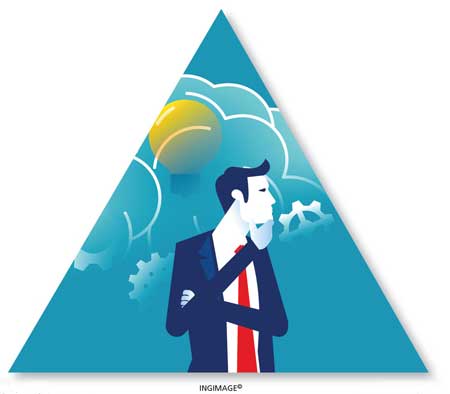SOCIAL TECHNOLOGY
THE VIRTUES OF DESIGN THINKING
Fuelling innovation through savvy design thinking
BY Jayashantha Jayawardhana
Total Quality Management (TQM) was introduced to the manufacturing world in the 1980s. By combining a set of tools – Kanban cards, quality circles etc. – it organised work and led to significant improvements.
The philosophy behind TQM was that people on the shop floor could work at a much higher level than was expected of them.
In her illuminating article titled ‘Why Design Thinking Works,’ in the Harvard Business Review (HBR), American strategist Jeanne Liedtka calls this blend of tools and insights applied to a work process a ‘social technology.’
She believes that design thinking has the potential to do for innovation what TQM did for manufacturing – i.e. unleash people’s full creative energies, win their commitment and radically improve processes.
Most executives are more or less familiar with design thinking tools – e.g. ethnographic research, emphasis on reframing problems and experimentation, use of diverse teams and so on. And some may have already tried them.
To succeed, an innovation process must deliver superior solutions, reduce the risk and cost of change, and facilitate employee buy-ins. While innovation is important, implementation brings its share of obstacles and tradeoffs.
So to manage tradeoffs, businesses call for social technology that addresses these behavioural obstacles, as well as the counterproductive biases of human beings. Design thinking fits that bill.
In most businesses, the application of design thinking entails seven activities. Each produces a clear output, which the next activity converts to another until the process arrives at what’s implementable.
Beneath the surface, each design thinking activity also reshapes the experiences of the innovators themselves in significant ways.
DISCOVERY Adapted from the fields of ethnography and sociology, many of the best-known methods of the design thinking discovery process focus on examining what constitutes a meaningful customer journey rather than collecting and analysing data.
This exploration involves three sets of activities – viz. immersion, sense making and alignment.
Accordingly, innovators immerse themselves in their existing or prospective customers’ experiences to identify their hidden needs. Immersion in user experiences provides innovators with the raw materials for deeper insights.
Design thinking tools such as Gallery Walk are immensely helpful. Alignment (which is the last stage of the customer discovery process) focusses on finding out if anything is possible and what job the design would do well.
SOLUTIONS As soon as they have a thorough reading of customers’ needs, innovators move on to find specific solutions that conform to the criteria they’ve identified.
At the end of the idea generation process, which entails emergence and articulation, innovators will have a portfolio of carefully considered concepts.
EMERGENCE This begins with a dialogue about potential solutions, and careful planning about who will participate, what challenges they will be given and how the conversation will flow.
After using the design criteria to perform individual brainstorming, participants gather to share ideas and build on them creatively – rather than negotiating compromises as and when differences arise. This helps bring diverse voices into the innovation process.
ARTICULATION Usually, emergence activities produce a number of competing ideas that are attractive and viable. Innovators then question their implicit assumptions.
To keep many behavioural biases such as overoptimism, confirmation and fixation on the original solutions from encroaching into the conversation, design thinking frames the discussion as an inquiry into what needs to be true for an idea to be feasible.
TESTING Businesses often build prototypes when fine-tuning a product or service that has largely been developed.
But in design thinking, prototypes are built for products that aren’t completed yet; it’s about users’ iterative experiences with a work in progress.
PRE-EXPERIENCE To support pre-experience, design thinking calls for the creation of basic, low-cost artefacts that will capture the essential features of the proposed user experience. These are often much rougher than the ‘minimum viable products’ that lean startups test on customers.
But what they lose in fidelity, they gain in flexibility – because they can easily be changed in response to what’s learned by exposing users to them.
LEARNING Real world experiments are an indispensable way to evaluate new ideas and identify the changes required to make them workable. These tests also help employees and customers overcome their fear of change.
So design thinking can fuel innovation in any industry or business model, on any scale – it’s a process that should be adopted by any enterprise.




